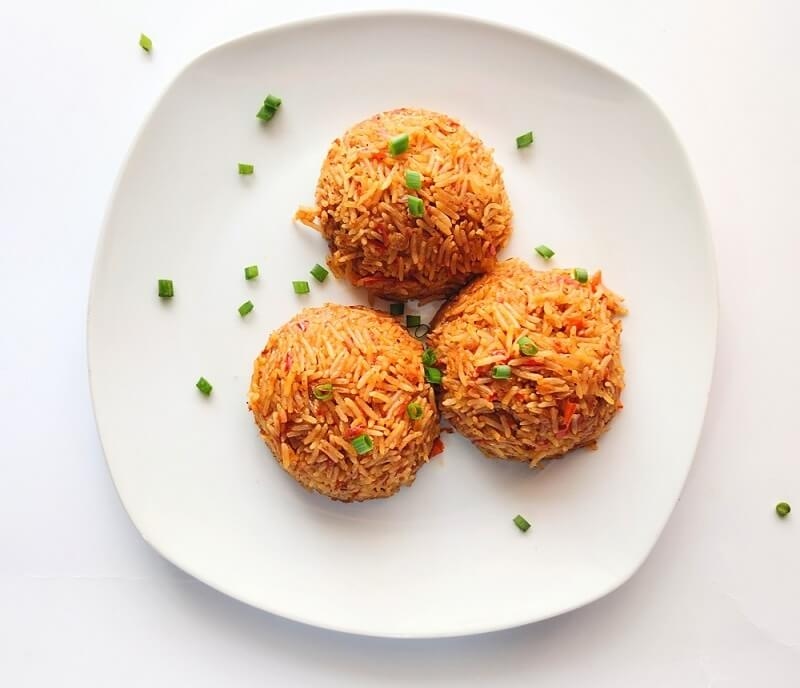
Across Africa, rice is a staple food that is the foundation of many exquisite meals. Anyone hoping to celebrate Africa's authentic flavors should learn the basics of African rice cooking. Enjoying authentic flavors is easy, but if you make an incorrect grab as a novice, you can make soggy rice, too. To show this point better, it should be noted that rice is a flexible ingredient if you are trying to make fluffy jollof rice (for instance) vs. soggy rice in African cooking. A lot can be gained from techniques that differ only slightly, including the correct ratio of rice to water, the order of seasoning layers, and cooking methods that optimize (or bring out) the textures of rice food.
Many types of rice meals, from Nigerian jollof to Ghanaian waakye, have cultural value. Simply knowing the correct techniques can make ordinary rice meals extraordinary. This guide to African rice recipes and proportions has some valuable methods and includes thoughts about cooking rice African style and using authentic tips on Ghanaian rice dishes.
In Africa, rice is not simply a commodity but a part of celebrations, family gatherings, and daily and cultural food. Rice is an adaptable grain that supports savory stews, spiced stir-fries, and sweet preparations.
Because of its importance, it is a worthwhile pursuit to master rice ideally.
Learning how to make rice can be difficult for beginners and novice cooks. Still, following simple but effective tips for making African-style rice can produce a consistently rich-flavored dish.
By making these simple changes, your rice dishes will be tenderer and tastier.
Jollof rice is one of the most recognizable recipes in African cookery. Anyone wanting to learn how to make authentic West African food must know how to make pleasantly fluffy jollof rice.
Making fluffy jollof requires time, proper attention, and balanced moisture management. Too much water or liquid will cause the rice to lose its fluffy texture, or too little water will leave the rice grains undercooked.

A common issue in kitchens is soggy rice, which can spoil the entire dish. Knowing how to avoid soggy rice in African cooking is part science and tradition.
These practices are widely applied across African kitchens to maintain authentic textures.
Learning the art of cooking rice African style means embracing regional techniques and traditions. Unlike plain boiled rice, African methods emphasize seasoning, broths, and layered flavors.
Cooking African-style rice requires patience and attention to detail, as flavor development is as important as texture.
Ghana offers a variety of rice-based meals, each with distinct preparation methods. Mastering tips for Ghanaian rice dishes adds diversity to your cooking repertoire.
Ghanaian rice cooking reflects a mix of creativity and tradition, showcasing the diversity of African cuisine.
This African rice recipe book provides the foundation for creating unique, tasty dishes. Each recipe focuses on balancing seasoning, the quality of rice (or local variation), and cooking techniques.
Some of the popular recipes for African rice:
Each meal will reveal unique techniques to help you understand why cooking African rice is delicious and varied.
Even skilled cooks can encounter roadblocks when making rice dishes. Knowing the pitfalls to avoid will save you time, energy, and, hopefully, a little frustration.
While there are certainly more ways to cook rice than mentioned above, recognizing some of these pitfalls can give you confidence in cooking traditional dishes.
Rice is rarely eaten alone in African cuisine. The side dishes and accompaniments complete the meal.
Knowing how to pair rice dishes enhances both flavor and nutrition.
Rice dishes carry deep cultural significance across Africa. They are served at weddings, festivals, and community gatherings. In West Africa, debates over the best jollof rice—Nigeria or Ghana—highlight how strongly people connect to these meals.
Food is more than sustenance; it is identity, heritage, and pride. Following traditional African rice cooking tips, cooks preserve a cultural legacy passed down for generations.
Beyond tradition, modern kitchens also benefit from practical hacks that make cooking easier.
These simple tricks combine tradition with convenience.
African rice cooking tips are the secret to creating memorable meals that balance flavor, texture, and culture. By learning how to make fluffy jollof rice, applying methods to avoid soggy rice in African cooking, and mastering authentic tips for Ghanaian rice dishes, anyone can bring African flavors into their kitchen. This African rice recipe guide makes cooking rice African style a rewarding and delicious experience.
This content was created by AI